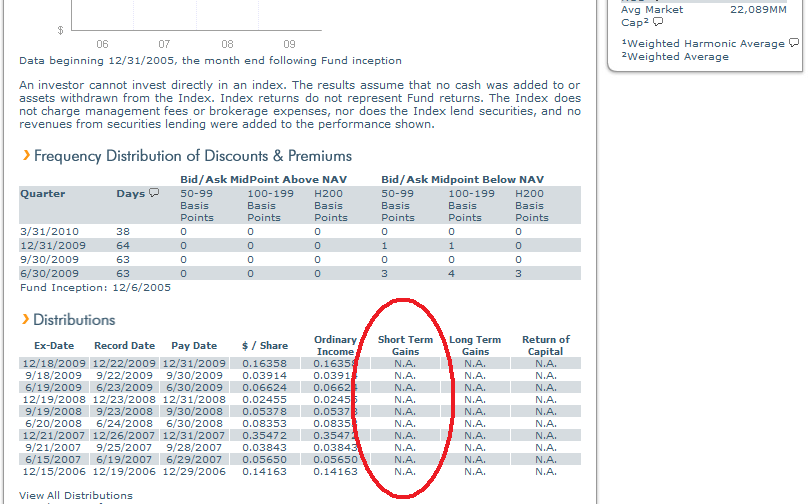Mutual Fund Capital Gains Distributions
Post on: 13 Июль, 2015 No Comment

When Gains Are Not Good
You can opt-out at any time.
Did you ever dream you might get taxed on shares of Microsoft that were purchased at the IPO. You didn’t buy shares of Microsoft at the IPO, you say? Maybe not, but if you own a mutual fund that purchased the stock at the IPO and they sell it while you own shares of the fund, you might be on the hook for paying tax on a portion of the gain.
Mutual Fund Distributions
Each year, generally in the last couple of months of the year, mutual fund shareholders face the possibility of receiving capital gains distributions from their mutual funds. Don’t be fooled by the capital gains distributions. These are not gains of the good sort.
These capital gains distributions are the result of the fund selling shares, such as with the Microsoft IPO as described above. If the fund manager decides to sell a stock due to the changing outlook for the stock, or even if the fund must simply raise cash for shareholder redemptions (if a shareholder sells shares of the fund), if the stock is trading higher than when the fund initially purchased it, the fund must distribute at least 95% of the gains to shareholders.
The capital gains distribution is taxable to the fund shareholders unless the fund is owned in a tax-deferred account (IRA, 401k, etc.).
For example, let’s say XYZ Mutual Fund purchased 100,000 shares of a stock 20 years ago for $1. The fund sells the 100,000 shares today for $50, which results in a long-term capital gain of $49 per share. The fund must distribute the gains to current shareholders and the shareholders must report the gain on their tax return .
What Is the Economic Value of the Distribution?
While it might seem like a positive to receive a capital gains distribution, there is actually no positive economic value to the distribution.
For instance, looking further at the XYZ Mutual Fund distribution:
- You own 1,000 shares of the XYZ Mutual Fund. The fund has a net asset value (NAV) of $10 per share. Your investment in the fund equals $10,000.
- The total value of your holding in the fund is $10,000 (1,000 shares at $10 per share) and you reinvest all capital gains and dividends.
- The fund distributes long-term capital gains as described in the previous example. The long-term capital gain upon the sale of stock in the previous example is 10% of the fund’s total net asset value or $1 per share.
- Shareholders of record on the record date will receive $1 for each share they own and the NAV of the fund will be reduced by $1 on the ex-dividend date .
- As a result, you receive $1,000, which is automatically reinvested in the fund.
- Assuming no change in the market value, you still own $10,000 of the fund.
How? The fund’s NAV was reduced to $9 by the capital gains distribution of $1 and you reinvested the gain to give you a total of 1,111.11 shares ($1,000 reinvested in at the new NAV of $9 buys 111.11 shares). If you did not reinvest the gain, you would have 1,000 shares at $9 and $1,000 cash. Either way, you have $10,000.
As previously mentioned, these capital gains distributions result in a tax bill if you own mutual funds in a taxable account. Retirement plans (IRAs, 401ks, etc.) are not impacted by capital gains distributions. Keep in mind, the reinvestment of the gains is added to your cost basis — reducing your taxable gain when the fund is eventually sold.
If you own mutual funds in a taxable account you may want to focus on low-turnover funds, which include index funds and tax-efficient mutual funds (even some actively managed funds have low turnover ). Otherwise, you should consider visiting your fund company’s website beginning in October of each year to determine if and when there will be capital gains distributions.
If the distributions are anticipated to be large, you should weigh the advantages and disadvantages of owning the fund. Indeed, you may want to sell the fund in order to avoid the distribution. If you sell the fund to avoid the distribution, be aware that if you buy the fund back within 30 days (either in your taxable account or in your IRA), you will run afoul of IRS wash sales rules .














